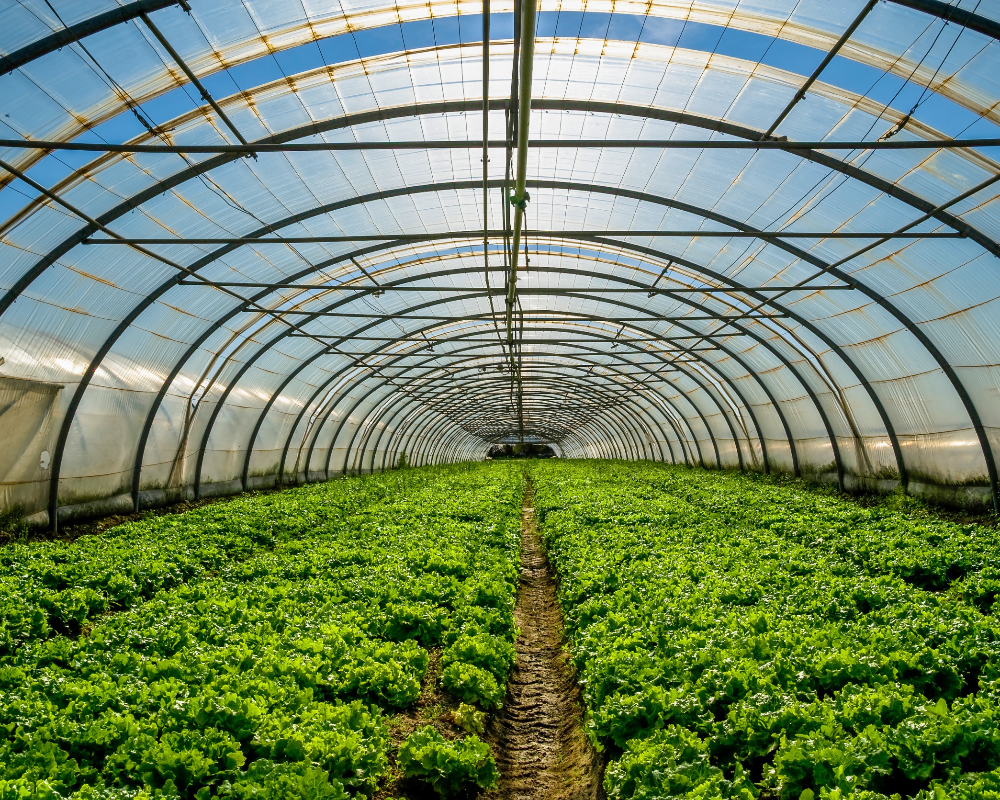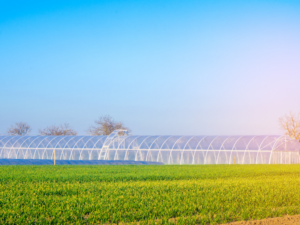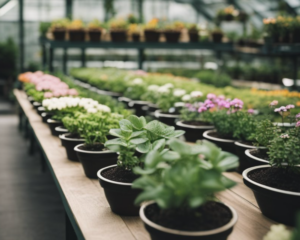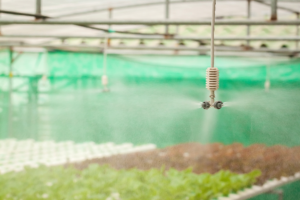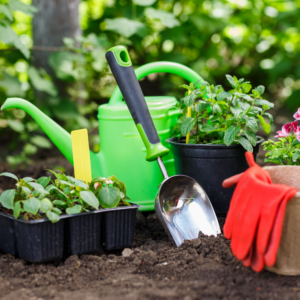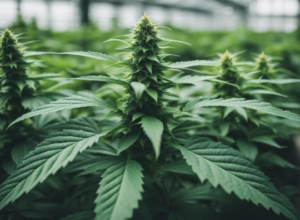A commercial greenhouse is a specially designed structure aimed at growing plants and produce on a large scale. These structures are usually made of glass or plastic and have controlled temperature, humidity, and light to optimize plant growth year-round. This setup allows farmers and growers to cultivate a variety of crops out of season and supply fresh produce to the market regardless of external weather conditions.
They often use advanced technology to enhance growth, such as hydroponics, where plants are grown in a nutrient-rich water solution without soil. Commercial greenhouses can vary in size from small sheds to industrial-sized buildings, catering to the different needs of growers, whether they are supplying local farmers markets or large grocery chains.
Energy efficiency is a significant consideration in the operation of a commercial greenhouse. With concerns over climate change and sustainability, newer greenhouses are designed to minimize energy use while maximizing plant production. This involves using alternative energy sources like solar power and employing energy-saving techniques to maintain the appropriate environment for plants. These practices make commercial greenhouses an important part of modern agriculture, supporting a trend towards more sustainable and year-round farming.
Basics of Commercial Greenhousing
Within commercial greenhousing, the focus is on maximizing crop yield, ensuring year-round cultivation, and optimizing the use of space. Here, both design and materials play critical roles in constructing effective greenhouse structures.
Types of Commercial Greenhouses
Commercial greenhouses broadly fall into two categories:
- Glass greenhouses: Traditional choice that offers excellent light transmission but can be more expensive and less durable.
- Plastic greenhouses: Including options like polyethylene film and polycarbonate, these are frequently favored for their lower cost, adaptability, and energy efficiency.
Essential Greenhouse Design Principles
Commercial greenhouse design emphasizes:
- Space utilization: They are tailored for dense plantations to increase output.
- Environmental control: Design includes systems to manage temperature, humidity, and light.
Fundamentals of Greenhouse Systems
Key greenhouse systems include:
- Irrigation: Vital for plant hydration, often automated for efficiency.
- Ventilation: Ensures appropriate air circulation to manage internal climate.
- Heating and cooling: Essential to maintain optimal conditions for crop growth year-round.
Understanding Greenhouse Materials
Common materials used in commercial greenhouses are:
- Polycarbonate: Durable, with good insulation properties, used for panels.
- Galvanized steel frame: Sturdy support structure for the greenhouse.
- Polyethylene film: An economical covering material that diffuses light well.
Commercial Greenhouse Infrastructure
Commercial greenhouse infrastructure encompasses a range of specialized construction and engineering design that ensures optimal growing conditions. These structures are expertly tailored to meet the specific needs of plants, incorporating advanced automation and energy-efficient technologies.
Greenhouse Construction and Engineering
Commercial greenhouses are constructed to be robust and durable, ensuring they can withstand various weather conditions. Local contractors often collaborate with specialized companies such as Prospiant or Nexus Greenhouse Systems to undertake high-quality commercial greenhouse projects. In these collaborations, engineering and construction teams work closely together to devise and implement detailed plans. These plans are crucial for creating greenhouse structures that consistently maintain an ideal environment for plant growth.
- Key Aspects of Construction:
- Structural Integrity: Ensuring the greenhouse framework is strong and stable enough to support itself and resist external forces like wind and snow.
- Weather Resistance: Utilizing materials and designs that protect against local weather conditions, from intense sun to heavy rainfall.
- Adequate Ventilation Systems: Designing ventilation that effectively manages air flow and temperature, crucial for plant health and energy efficiency.
Greenhouse Automation and Equipment
Integrating automation within a greenhouse can radically improve efficiency and plant health. This not only reduces labor costs but also enhances consistency in the growing conditions, which is essential for commercial-scale operations.
- Climate Control: Systems that automatically adjust temperature, humidity, and light to maintain optimal growing conditions.
- Irrigation: Automated watering systems that ensure plants receive the precise amount of water at the right time.
- Feeding Systems: Automated nutrient delivery systems that provide plants with the necessary fertilizers in accurate proportions.
Insulation and Energy Efficiency
Energy efficiency is a key component of modern greenhouses. Effective insulation techniques can drastically reduce energy costs while maintaining the optimal environment for plant growth. Advances in materials and construction methods have enabled the creation of greenhouses that maximize light penetration and minimize heat loss.
- Energy Conservation Strategies:
- Multi-layered Glazing: Utilizing multiple layers of glass or plastic to enhance insulation and reduce heat escape.
- Thermal Curtains: Deploying curtains that can be drawn to conserve heat during colder periods and retracted to allow light during the day.
- Reflective Coatings: Applying special coatings to surfaces inside the greenhouse to reflect heat back into the greenhouse, thus reducing energy waste.
Consider Commercial Greenhouse Kits
Commercial greenhouse kits offer a convenient and cost-effective solution for businesses looking to expand or start their greenhouse operations. These kits are designed to provide everything needed for a quick and efficient setup, making them an excellent choice for both novice and experienced growers alike. Here are some key features and benefits of commercial greenhouse kits:
1. Pre-Designed Convenience
Greenhouse kits come pre-designed and include all the necessary components, such as frames, coverings, doors, and sometimes even basic climate control systems. This pre-packaged approach simplifies the purchasing and assembly process, reducing the need for custom design work and minimizing construction time.
2. Customization Options
While kits are pre-designed, many suppliers offer a range of customization options to suit different climatic conditions and specific growing needs. Buyers can choose from various sizes, cover materials, and additional features like automated ventilation, shading systems, or advanced irrigation setups to tailor the greenhouse to their operational requirements.
3. Cost-Effectiveness
Investing in a greenhouse kit can be more cost-effective compared to building a custom greenhouse from scratch. The standardized production of kit components often leads to lower manufacturing costs, savings that are passed on to the customer. Additionally, the ease of assembly reduces labor costs and the potential for construction errors.
4. Scalability
Many greenhouse kits are designed with scalability in mind. This means they can be easily expanded or modified as the needs of the business grow. Additional sections can be added to increase the total growing area, and supplementary systems like lighting or heating can be integrated as required.
5. Ease of Installation
Greenhouse kits typically come with detailed instructions and are designed for easier self-assembly. This DIY approach can be a significant advantage for small operations or those in remote locations, eliminating the need for specialized construction crews and equipment.
6. Quality and Durability
Reputable manufacturers use high-quality materials to ensure the durability and longevity of their greenhouse kits. These materials are chosen for their ability to withstand adverse weather conditions and provide adequate insulation and light transmission for optimal plant growth.
Retail and Industrial Greenhouse Options
Greenhouses vary significantly, from structures designed for retail environments to those intended for industrial-scale operations. Industrial greenhouses might focus on large-scale food production, whereas retail greenhouses are typically oriented towards garden centers and boutique plant cultivation. Both varieties benefit from the expertise of manufacturers and project managers who can create functional and aesthetically pleasing facilities.
- Scale Variants:
- Large-scale Agriculture Production: Designed for extensive food production, these greenhouses are built to support vast amounts of crops efficiently.
- Small-scale Specialty Plant Cultivation: Catering to specialized markets, these greenhouses focus on the quality and diversity of smaller crop batches.
- Display-oriented Designs for Retail: Tailored to attract customers, these designs enhance the shopping experience and showcase plants attractively.
Project Planning and Management
When kicking off a commercial greenhouse project, understanding the financials, development process, and logistics is critical. It sets the foundation for a successful execution. Here’s a closer look at these vital components of project planning and management.
Project Development and Support
Greenhouse projects require immense attention to detail during the development phase. Greenhouse specialists often offer ongoing support and consultation services to guide through this phase. They can assist clients from the drawing board to the fruition of the project, providing expertise on the most minute of details involved in setting up a greenhouse.
- Pre-Construction: Site audits, permits, and design layout.
- Construction: On-site development, structure building, and systems installation.
- Post-Construction: Maintenance training and operational support.
Sourcing and Shipping Logistics
Managing the logistics of sourcing materials and shipping them to the site is crucial. The timing, reliability, and condition of product arrival can impact the project timeline. Some suppliers, such as Greenhouse Megastore, have robust shipping networks that ensure materials like the Series 1000 reach the site promptly and in perfect condition. Working with trusted partners simplifies the complexity of these logistics.
- Sourcing: Selecting high-quality materials and securing them at competitive prices.
- Shipping: Coordinating timely deliveries and handling on-site logistics.
Aftercare and Maintenance
Proper aftercare and maintenance ensure a commercial greenhouse operates efficiently and prolongs its lifespan. This includes routine check-ups, timely repairs, and professional consultations.
Routine Maintenance and Upgrades
Routine maintenance is critical for sustaining optimal greenhouse operations. Owners should create a checklist to monitor structural integrity, climate control systems, and irrigation equipment. For example, GrowSpan suggests monthly checks of the greenhouse covering for any tears needing repair. Greenhouse Megastore, a one-stop shop for supplies, provides essentials for upgrades such as high-quality polycarbonate panels and automated control systems for temperature and humidity.
- Inspect and Clean: Monthly cleaning of panels and checking for structural damage.
- Climate Control: Regularly test sensors and calibrate them for accurate readings.
- System Upgrades: Implementing energy-efficient systems and LED lighting as necessary.
Innovations in Greenhouse Technology
The commercial greenhouse sector is rapidly adapting with cutting-edge advancements in technology, pushing towards optimal growth conditions and sustainable practices. The innovations range from intricate automation systems to hardy construction materials and strategic research initiatives, all converging to bolster food security.
Progress in Greenhouse Materials and Construction
Innovative materials like robust galvanized steel frames are revolutionizing greenhouse construction. These materials not only provide durability against harsh conditions but also contribute to energy efficiency. The use of diffused light panels and energy curtains helps maintain ideal temperatures and light levels, which is critical for year-round production in various sizes and shapes of greenhouses.
Research and Development in Greenhouse Farming
Continuous research in greenhouse farming paves the way for resistant crop varieties and more efficient growing practices. Industry-leading institutions are experimenting with hydroponic and aeroponic systems, which have shown a significant reduction in water usage and increased crop yields. Data-driven plant breeding and integrated pest management are other areas where research is yielding tangible benefits.
Future of Food Security with Greenhouses
Greenhouses hold a promising role in the future of food security, with the ability to produce more with less land and resources. Advances in technology are creating more resilient agricultural systems capable of withstanding unpredictable climate conditions and providing stable food production. Innovative designs and automation contribute to high-output food production that is both environmentally sustainable and economically viable.
Choosing a Greenhouse Provider
When looking for a greenhouse provider, it’s essential to consider their range of products, expertise, and the level of customization they offer. Each provider brings a unique set of skills and options to table.
Working with Greenhouse Specialists
Greenhouse specialists can guide customers through the process, ensuring that one understands the various components of a greenhouse, from heating systems to the type of glazing. They offer expertise in selecting the ideal setup for specific horticultural needs. Companies like YourGreenhouses who are knowledgeable in local climate conditions and plant requirements.
Legal and Regulatory Considerations
Before establishing a commercial greenhouse, it is critical to understand and comply with local legal and regulatory frameworks. These regulations are in place to ensure safety, environmental protection, and community standards.
Zoning and Building Regulations
Local zoning laws dictate where a commercial greenhouse can be legally constructed. They must check if the land is zoned for agricultural or commercial use. Failing to adhere to zoning laws can result in costly legal disputes or the need to relocate.
Building codes are equally important as they set the standards for construction. Greenhouses must meet specific structural requirements to ensure safety against natural elements like wind and snow. A local contractor experienced in greenhouse projects will be familiar with these building codes and can ensure compliance.
In addition to obtaining the necessary construction permits, commercial greenhouse operators must be mindful of fire safety regulations, which might require the installation of sprinkler systems or other fire suppression equipment.
It is recommended to engage with local authorities early in the planning process to navigate the various compliances smoothly.
Key Takeaways: What to Know Before Buying a Commercial Greenhouse
Commercial Greenhouse Buying Considerations
Investing in a commercial greenhouse is a significant decision that can greatly impact the productivity and efficiency of agricultural operations. Here are several critical considerations to keep in mind when purchasing a commercial greenhouse:
1. Size and Scalability
The size of the greenhouse is one of the first considerations, as it directly affects both initial cost and potential output. It’s important to assess the current needs and future growth expectations of your operation. Opting for a modular design can provide the flexibility to expand as your business grows, allowing you to scale up production without the need for entirely new structures.
2. Structural Materials
The choice of materials for both the frame and the covering of the greenhouse affects durability, insulation properties, and light transmission, all of which contribute to the overall growing environment and energy efficiency. Common materials include:
- Polycarbonate panels, which are strong, provide good insulation, and diffuse light effectively.
- Glass, which offers excellent light transmission but can be more costly and less energy-efficient without the proper coatings.
- Steel frames are preferred for their durability and strength, especially in areas with harsh weather conditions.
3. Climate Control Systems
Adequate climate control is essential for optimizing plant growth and maximizing yield. Look for advanced systems that offer precision control over temperature, humidity, and ventilation. Automated systems that adjust conditions based on real-time data can significantly enhance the effectiveness of these controls, improving outcomes and reducing labor costs.
4. Energy Efficiency
Energy consumption can be a considerable ongoing cost in greenhouse operations. Evaluate energy-efficient features such as double-glazed panels, thermal curtains, and energy-efficient heating and cooling systems. Additionally, consider the potential for integrating renewable energy sources like solar panels to offset energy costs and reduce the environmental impact.
5. Irrigation and Watering Systems
Efficient irrigation systems are crucial for water conservation and plant health. Drip irrigation or ebb and flow systems can deliver water and nutrients directly to the roots with minimal waste. Automated watering systems can further enhance water use efficiency and are especially useful in large-scale operations.
6. Local Regulations and Zoning Laws
Before making a purchase, it’s crucial to understand local zoning laws and building regulations. These regulations may dictate where a greenhouse can be constructed and what size and types of structures are permissible. Additionally, building codes can influence the types of materials and designs used in greenhouse construction to ensure safety and compliance.
7. Supplier and Manufacturer Reputation
The quality of your greenhouse largely depends on the reliability and expertise of the supplier or manufacturer. Choose a provider with a solid reputation in the industry, known for quality products and customer service. Look for suppliers who offer ongoing support, including installation, maintenance, and training services.
8. Cost and Return on Investment
Finally, evaluate the total cost of ownership, including purchase, installation, operation, and maintenance expenses. Compare these costs against the expected increase in production and revenue to assess the potential return on investment. A higher initial cost might be justified by greater efficiency, lower operating costs, or better crop yields.
By carefully considering these factors, you can select a commercial greenhouse that meets your specific needs, supports efficient and sustainable growing practices, and delivers a solid return on your investment.
Final Thoughts
In today’s world, where we need to think carefully about sustainability and technology, commercial greenhouses play a key role in farming. These structures help us grow food all year round, combining traditional farming methods with modern technology. They do more than just protect plants; they are at the forefront of a new way of farming that deals with changing weather patterns and a growing global population.
By using advanced methods like hydroponics and automated systems, commercial greenhouses are not just solving current problems but are also shaping the future of agriculture. They focus on using resources wisely and reducing environmental impact, which is crucial as we continue to look after our planet and feed more people. As greenhouses keep improving, they show the strength and flexibility of modern farming and encourage us to think differently about how we produce food, aiming to keep up with global needs in a sustainable way.
Frequently Asked Questions
In navigating the complexities of commercial greenhouse ownership, these FAQs tackle cost considerations, design choices, and optimization strategies.
How much can I expect to spend on a commercial greenhouse?
The investment for a commercial greenhouse can range significantly based on size and materials, usually starting from a few thousand dollars to upwards of hundreds of thousands for sophisticated setups.
What should I consider when looking for a commercial greenhouse to buy?
Buyers should evaluate factors such as size, location suitability, structural materials, local climate conditions, and the type of plants they intend to cultivate.
Are there benefits to choosing a heavy-duty commercial greenhouse over a standard one?
Yes, heavy-duty commercial greenhouses offer enhanced durability against weather, longer lifespan, and better insulation which can lead to increased energy savings.
What factors influence the pricing of commercial greenhouse structures?
Pricing is influenced by material quality, greenhouse size, type of glazing, included technology for climate control, and additional features like shading or automated systems.
Where can I find quality commercial greenhouse kits?
Quality greenhouse kits can be sourced from specialized agricultural supply companies, online retailers, or local manufacturers that focus on commercial farming solutions.
Can you give me tips on optimizing lighting for my commercial greenhouse?
Maximizing natural light through strategic design is critical, but supplemental lighting like LED or high-pressure sodium lamps should be considered to support plant growth and extend production cycles.

